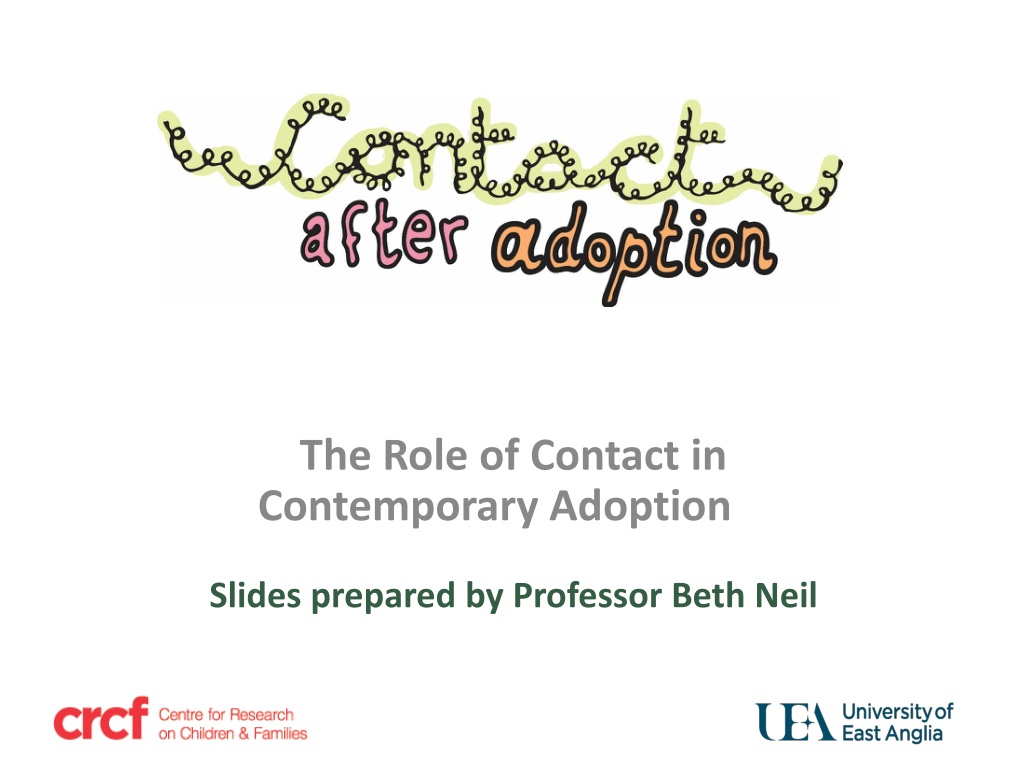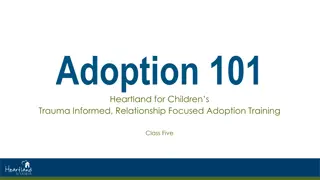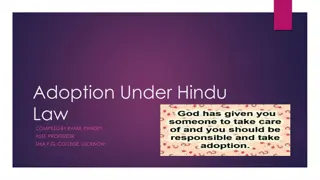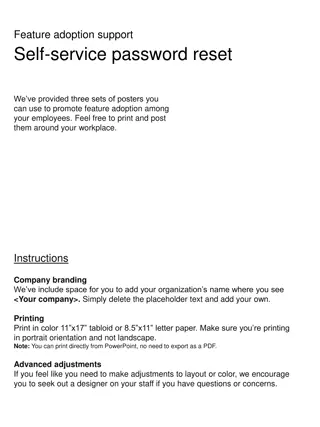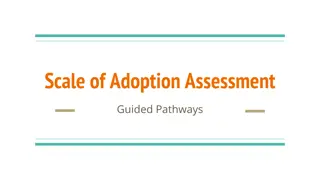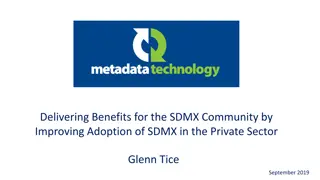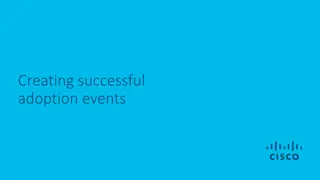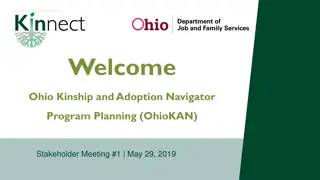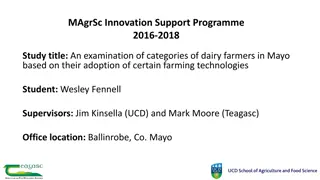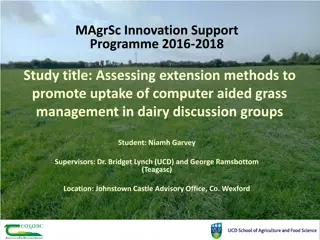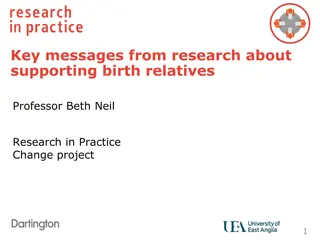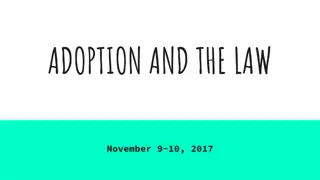The Role of Contact in Contemporary Adoption
The slides prepared by Professor Beth Neil delve into the significance of post-adoption contact, exploring questions, experiences, and studies related to contact between adopted children, birth relatives, and adoptive families. The content highlights the importance of flexibility in contact guidelines, longitudinal studies on face-to-face and indirect contact, pathways of contact over time, and the essential needs of adopted children for security, love, belonging, knowledge, and healing from past experiences.
Download Presentation

Please find below an Image/Link to download the presentation.
The content on the website is provided AS IS for your information and personal use only. It may not be sold, licensed, or shared on other websites without obtaining consent from the author.If you encounter any issues during the download, it is possible that the publisher has removed the file from their server.
You are allowed to download the files provided on this website for personal or commercial use, subject to the condition that they are used lawfully. All files are the property of their respective owners.
The content on the website is provided AS IS for your information and personal use only. It may not be sold, licensed, or shared on other websites without obtaining consent from the author.
E N D
Presentation Transcript
The Role of Contact in Contemporary Adoption Slides prepared by Professor Beth Neil
A history of questions about post adoption contact Q: Post adoption contact! That s a really bad idea isn t it? A: Not necessarily Q: Contact sounds great! perhaps everyone should have it? A: Not necessarily Q: When and how does contact work/not work? A: At last, a good question!
It must be right for the child. All children are different so there must be very flexible guidelines around contact. I think it s a case of experience, you need workers who are experienced enough to be able to say I think this is what you should do with this child in this family in this particular case . But even that must remain flexible as the children change. (Adoptive mother)
The Contact after adoption study: Face-to-face and indirect contact with adult birth relatives for children adopted under age 4 (Neil et al, 2014/2015) Longitudinal: pre-school, middle childhood, late adolescence Birth relatives, adopted children/young people & adoptive parents 45 adoptive families and 32 birth families at Time 3 (mean age 18) The Supporting direct contact study: Face-to-face, agency mediated contact (Neil et al, 2011) 55 adoptive parents 39 birth relatives
Contact pathways over time (Neil et al, 2014/15) Face-to-face much less common than letterbox Most contact infrequent and voluntary Many contact arrangements fell by the wayside 1/3 of YP had lost all contact by age 18 Contact with parents least enduring Indirect contact less enduring than face-to-face Reductions often driven by wishes of adopters or child; some birth relatives had died Some increases in contact in adolescence inc. though social media
What do adopted children need? Security, love and to belong in their new family Knowledge of their birth family, their personal history and why they needed to be adopted To manage feelings of loss and separation To make sense of being in more than one family To recover from early harm
How does contact work out?(Neil et al, 2011; Neil et al, 2014/5) Every case is different; no one type of contact is best in all cases Indirect contact often more complex than direct Contact can have benefits for child, adopters and birth relatives: information, managing loss/dealing with anxiety, maintaining open communication Contact works for the child when the adults collaborate and respect each others different roles Contact does usually not often affect child s overall development; it can promote identity development.
Practice model: contact in permanent placements Start here What else? What are goals/purpose/ Support suspension of contact needs? Assess Review How can this contact support this child? strengths/risks Plan support for contact Provisional contact plan
Setting goals: what benefits do you hope will be achieved? For children For For birth relatives adoptive parents
Potential benefits for adoptive parents Finding out about their child s background and birth relatives Helping them communicate with their child Helping them manage anxieties: "For me, a mother popping up out of the blue would feel very threatening. So I don t have that threat because we already have that relationship with her. Bringing them closer to their child
I think it actually makes them feel more part of our family Every contact we come away feeling more secure really more certain that they need us as parents and that they are our children (Adoptive parent) [Birth father] was a right mess and very quiet and very, so young looking, and you just felt quite sorry for him really we don t think of them as these ogres anymore. It could have been very easy just to be very negative about him forever. (Adoptive parent)
Potential benefits for birth relatives Mitigating feelings of loss and guilt Reassurance about the child Being about to still contribute something to the child Maintaining a valued relationship
I just enjoy every moment, every time I see them I love having contact The children need this contact to help them adjust to what has happened in their lives we feel they just need the reassurance of knowing that their birth family is still there and care about them I know she is very happy where she is and that makes me happy Birth relatives: Neil et al, 2012
Young peoples satisfaction with openness (Neil et al, 2013) Satisfaction with contact varied within all levels openness; it was associated with contact reliability/predictability more than type Dissatisfaction often associated with gaps in contact Most saw some benefits in having contact and argued that the option should be there: Even if the contact is only brief.. I think social workers should ensure that the option of staying in contact is always left open
Benefits of contact for adopted young people Information Needs Relationships Openness in Adoptive Family
[Getting letters back] makes you kind of feel that that even though we re not with them, they still care, they didn t just completely dismiss us. [My parents have] always been really open about it, we don t have to be scared of can we talk about our birth family in front of them, will they get upset? It s nice to be able to see her and have a complete picture of her [What I ve got out of contact is] knowing who she is and what she was like, rather than thinking she could be like this - it s like you can have this whole little fantasy world ..and once you see her, you know it s not going to happen
17 year, face-to-face contact with birth mother and grandmother She was like a proper nan She d do stupid little nan things, and even though you only used to see her at this place, I don t know, I d go and give her a hug. I really liked seeing her.
Challenges of contact for adopted young people Emotional strain Managing loss Unanswered questions
Its upsetting to see her how she is, but I like to see that she is okay and that she s safe It is good to know I was being thought of, but at the same time I still feel like they think they know me and I don't feel like I know them. I don t know how she feels. That s one of the horrible questions that I ask probably on a weekly basis what happens if I get to 18 and she doesn t like me? I felt like I d been led on through the letter contact because I thought that she was this amazing woman and then she turned out to not be that at all.
Contact and adoptees development : (Neil et al, 2013) Adoption mostly worked well to provide children with a supportive and loving family for life. Many young people had developmental issues that increased or emerged in adolescence. Contact unrelated to overall development Contact sometimesneeded to take a back seat when children were struggling
Adoptive identity (Neil et al, 2013) Cohesive Developing Who am I? Why was I adopted? Unexplored Fragmented
Identity patterns Unexplored (N=5): YP at ease with very simple adoption story Developing (n=5): feeling there s got to be more to it Cohesive (n=16): worked through, balanced view of adoption that made sense to YP Fragmented (n=6): strong negative feelings, lack of coherence in adoption narrative
All I know is when my birth mum was born, her mum didn t have a very good upbringing so didn t really know how to look after her so when it came to having kids she didn t know how to bring us up she mixed with the wrong people and with drugs it was safer for us to be adopted. [Meeting my birth mum], it just kind of made me understand in a way why she did it and that even though she s part of my life, she s not a big part of my life. (Cohesive)
I have no idea [why I was adopted], it could be completely different. That s the story that I ve been told, but I have no idea. It s that uncertainty which hurts. What does adoption mean to you? I would say um just the word, not necessarily my opinion; I would say I was taken away from my birth parents to have a better life . It doesn t necessarily mean that s how it happened or that s what happened I don t know if you understand the degree that it bothers me and it can bother me daily, even now, its like a burn (Fragmented)
Was contact linked to identity? 84% of those with cohesive identity were having birth family contact (versus 44% of others) Levels of adoptive parent adoption communication openness higher for those in cohesive identity group, and lowest in fragmented group. Key role of adoptive parents in facilitating identity development though communication and contact
Steps to identity coherence Child explores and processes thoughts and feelings Contact helps adopters and children talk Child gets direct information about birth family Contact helps adoptive parents empathise with birth family Open minded adoptive parents chose some contact
Practice model: contact in permanent placements Start here What else? What are goals/purpose/ Support suspension of contact needs? Assess Review How can this contact support this child? strengths/risks Plan support for contact Provisional contact plan
Assessing strengths & risks: children Younger placed children with fewer problems can cope best with contact, but they may need it less Older children with more problems may find contact harder to cope with, but they may need it more. Relationship history Nature of current relationship with birth relative Wishes & feelings Age & development
Assessing strengths/risks: adults Within the kinship network, do the adults involved support and promote the child's connection to BOTH families? Adoptive parents: adoption communication openness (CO) Birth relatives: acceptance of adoption Commitment to contact and willingness to work at it
Face-to-face contact was associated with higher levels of ACO and birth relative acceptance High ACO Direct contact Positive acceptance Neil, 2009: British Journal of Social Work; Neil 2007: Adoption Quarterly
The trouble with planning contact during proceedings Well if the court thinks I m a terrible parent, perhaps my child will be better off with me out of their life Adoption! I m not going to think about that I m fighting to keep my child! Will I love this child and will they love me? What will happen to me? Who can I trust? What if the adoptive parents are horrible? Will I ever get a child? I better say the right thing!
Where contact may destabilise placements Cases of traumatic/abuse neglect (Howe and Steele, 2004) Continued lack of support for placement by birth relatives (Neil et al, 2011) Too high frequency new family unable to function as family (Neil, Beek and Schofield, 2003) Behavioural/emotional problems of child following contact put too much stress on family (Mackaskill, 2002) Contact perpetuates idealised view of abusive birth parents (Loxtercamp, 2009)
Sibling contact (Cossar & Neil, 2013) Family boundary issues: complex networks, relationships between sets of parents, managing the information flow Benefits: relationships, reassurance, identity, positive models of parenting for older sibs Challenges: role changes, absence of normal family practices, different perceptions of birth family, risks posed by siblings
Practice model: contact in permanent placements Start here What else? What are goals/purpose/ Support suspension of contact needs? Assess Review How can this contact support this child? strengths/risks Plan support for contact Provisional contact plan
How do social workers support contact? (Neil et al 2011, 2015) Good practice Child s needs come first, but adults needs also addressed Support with emotions and relationships Proportionate risk management Problems in supporting contact Needs of one or more parties (esp. birth relatives) not addressed Disproportionate risk management Contact supervised not facilitated: it may be safe but not happy
How does practice need to align with evidence? Move away from standard formula towards case sensitive planning Be willing to question assumptions: letterbox is easier than face-to-face ; contact can t work in non consenting cases Recognise that successful contact can address difficulties often seen as contraindications (e.g. birth parents lack of acceptance, adoptive parents anxieties) Question own attitudes and values: maintain an ethical climate
For more information. https://www.uea.ac.uk/contact-after-adoption/home The Contact after Adoption study Neil, E., Beek, M., and Ward, E. (2015) Contact After Adoption: A longitudinal study of post-adoption contact arrangements. CoramBAAF. http://www.adoptionresearchinitiative.org.uk/study5.html Helping Birth Families and Supporting Direct Contact after Adoption studies Neil, E., Cossar, J., Jones, C., Lorgelly, P., & Young, J. (2011). Supporting direct contact after adoption. BAAF. e.neil@uea.ac.uk
